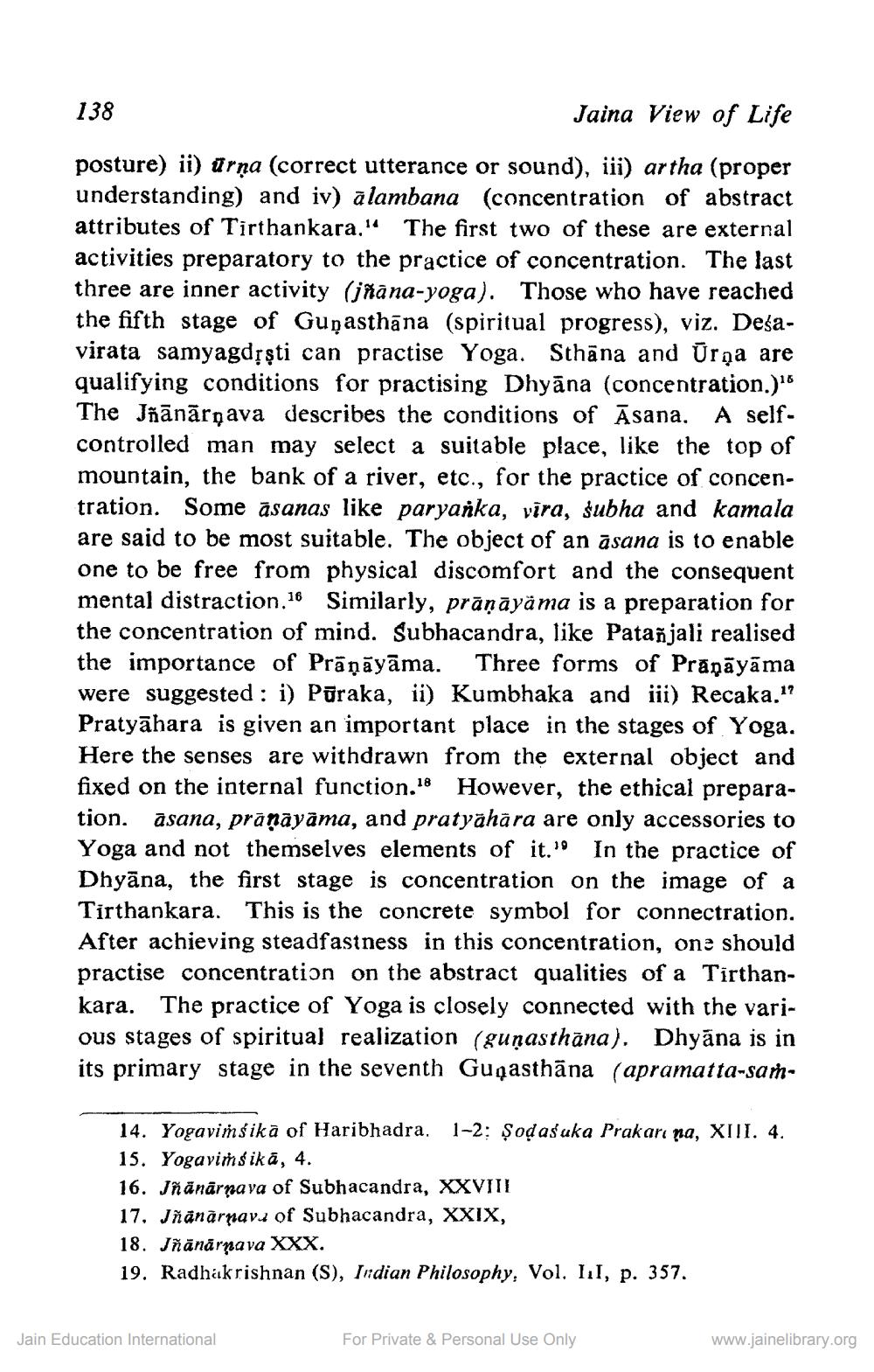________________
138
Jaina View of Life
posture) ii) ürņa (correct utterance or sound), iii) artha (proper understanding) and iv) a lambana (concentration of abstract attributes of Tirthankara." The first two of these are external activities preparatory to the practice of concentration. The last three are inner activity (jñāna-yoga). Those who have reached the fifth stage of Guņasthāna (spiritual progress), viz. Desavirata samyagdȚşti can practise Yoga. Sthāna and Ūrņa are qualifying conditions for practising Dhyāna (concentration.) The Jñānārnava describes the conditions of Āsana. A selfcontrolled man may select a suitable place, like the top of mountain, the bank of a river, etc., for the practice of concentration. Some āsanas like paryanka, vīra, subha and kamala are said to be most suitable. The object of an asana is to enable one to be free from physical discomfort and the consequent mental distraction.16 Similarly, prāņāyāma is a preparation for the concentration of mind. Subhacandra, like Patanjali realised the importance of Prāņāyāma. Three forms of Prānāyāma were suggested : i) Pūraka, ii) Kumbhaka and iii) Recaka."? Pratyāhara is given an important place in the stages of Yoga. Here the senses are withdrawn from the external object and fixed on the internal function. However, the ethical preparation. asana, prāņāyāma, and pratyāhāra are only accessories to Yoga and not themselves elements of it.' In the practice of Dhyāna, the first stage is concentration on the image of a Tirthankara. This is the concrete symbol for connectration. After achieving steadfastness in this concentration, one should practise concentration on the abstract qualities of a Tirthankara. The practice of Yoga is closely connected with the various stages of spiritual realization (guņasthāna), Dhyāna is in its primary stage in the seventh Guqasthāna (apramatta-sam
14. Yogavimś ikā of Haribhadra. 1-2: Șodasuka Prakarı na, XIII. 4. 15. Yogavims ikā, 4. 16. Jäänârnava of Subhacandra, XXVIII 17, Jñanarnav.. of Subhacandra, XXIX, 18. Jñānārpava XXX. 19. Radhakrishnan (S), Indian Philosophy, Vol. II, p. 357.
Jain Education International
For Private & Personal Use Only
www.jainelibrary.org




